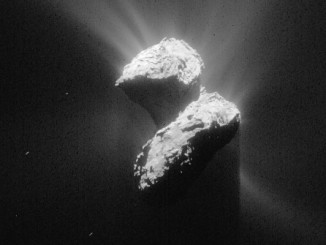
For the next month or so you can see the return of periodic comet 2P/Encke (Encke’s Comet). It’ll be a brightening object in the morning sky as it heads towards perihelion on 22 October, but first passing closest to Earth on 24 September. Comet 2P/Encke, the parent comet of the Taurid meteor stream, has one of the shortest orbital period of any bright comet, taking just 3.3 years to go around the Sun.
By the start of the third week of September, 2P/Encke lies in northern Gemini, around 1.7° north-west of Castor (alpha Gem), Gemini’s celebrated multiple star and the more northerly of the Gemini ‘Twins’. The comet climbs 30° high from London at about 2.50am BST, when you’ll need a large telescope or an imaging set-up to pick it up (the image here was shot through a 250mm (10-inch) astrograph and a cooled camera).

Closest approach to Earth
Comet 2P/Encke is predicted to brighten by around 3 magnitudes during September as it tracks southwards and eastwards through Gemini and Cancer on its way to Leo. On 24 September, it’s predicted to be around magnitude +9.5 at closest approach to Earth (at 0.9 AU); it lies just inside Cancer at its boundary with Leo, around a degree west of magnitude +4.5 kappa Leonis. You’ll need to wait until about 5am BST for the comet to achieve an elevation of around 30° above the eastern horizon, and you’ll have under an hour to observe it.

By mid-October it will be lost to the morning twilight, having plunged too far southwards to be visible from the UK as it heads towards perihelion, when it may be a sixth-magnitude object.





